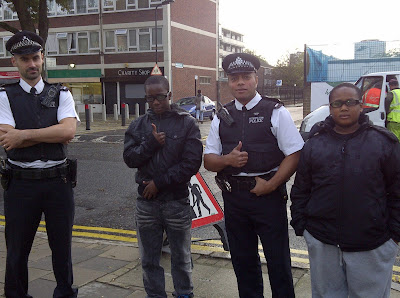Design Day was very successful. Residents braved the London rain to put their thoughts and ideas on paper with the support of a pool of creative professionals, including representatives from the housing development L&Q.



A number of artworks were selected on the day to be taken to the next stage. The graphic representations (see the presentation below) help visualise what the designs may look like if they were manufactured. There is a fantastic wealth of content in the presentation below that can be brought together to form a body of public artworks, as envisioned by residents. The presentation was shared with residents for them to select and discuss the next stages.



A number of artworks were selected on the day to be taken to the next stage. The graphic representations (see the presentation below) help visualise what the designs may look like if they were manufactured. There is a fantastic wealth of content in the presentation below that can be brought together to form a body of public artworks, as envisioned by residents. The presentation was shared with residents for them to select and discuss the next stages.
The artworks drew their inspiration from Haggerston's incredible history of textiles and silk weaving.
© V&A
In 1831 - 32, the population of Spitalfields, which then encompassed Haggerston, counted 50 to 100,000 dependent on silk weaving. There were 14 - 17,000 looms, including 100 Jacquard looms. A weaver generally had two looms, and children started work at 6 - 7 yrs-old to gum silk.
In the beginning of the 18th century, designs were naturalistic. 1730's saw innovation in the creation of 3D patterns. 1740's were full of flowered silk design and botanical inspiration. In 1750's & 60's, designs became more stylised, fabrics stiffer, and metallic threads started appearing giving a beautiful voluptuous look to dresses. From 1770's, patterns were becoming more informal, using stripes and shapes. By the end of the 19th century, the Neo-Classical patterns were dominating the industry.
Thank you to London & Quadrant for the opportunity.
Thank you to all residents who contributed, and to the professionals who made this day a success.
Karen Janody - Project Director
Asha Rapjut - Graphic Designer
Julian Taylor - Metal sculptor & blacksmith
Katy Dawe - Textile artist
Lucy Ferguson - Coordinator & resident briefing
Mary Spyrou - Textile historical research
Julie Conrad & Graham Girling from L&Q Group.



















